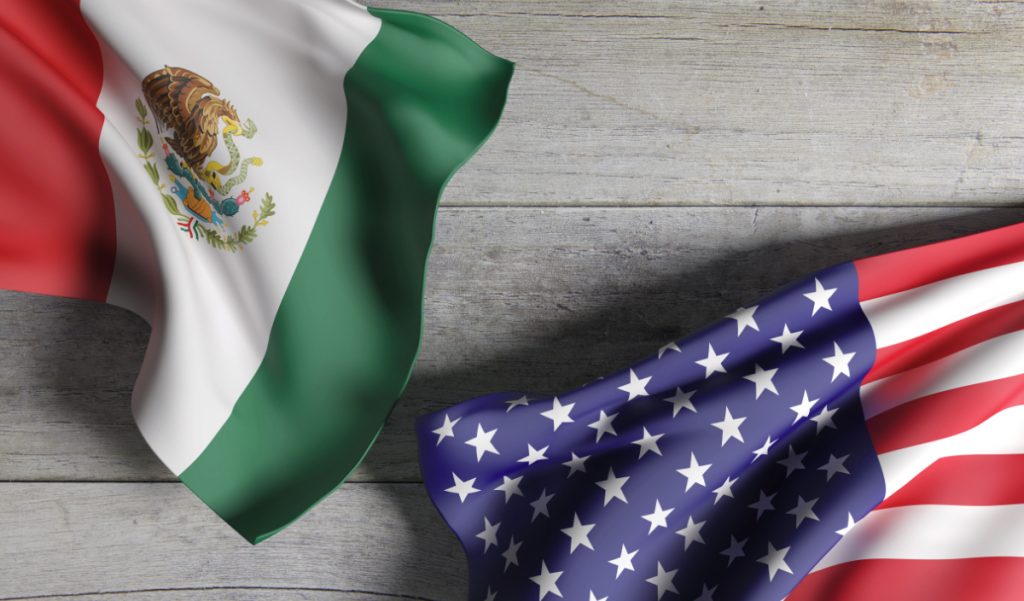Editor’s note: Here is a good run down of what is in the proposed US Mexico trade agreement.
The U.S. and Mexico announced an agreement Monday on the key sticking points between the two countries that had held up renegotiating of the North American Free Trade Agreement for over a year. The deal still needs approval by the U.S. and Mexican legislatures and negotiators still hope that Canada will join as well.
[ Josh Zumbrun | Aug. 27, 2018 | WSJ]
Here’s a summary of some of the agreement’s big provisions, and what those details mean:
- Automobile production Under the new agreement, 75% of the content in automobiles must be sourced in North America to quality for tariff-free treatment, up from just 62.5% under the current Nafta.
- High-wage auto production The agreement stipulates that between 40% percent and 45% of auto content must be produced by workers earning at least $16 an hour. This would force companies to either maintain more production in the U.S. and Canada—where wages are higher—or pay higher wages in their Mexican factories. Either way, the requirement reduces the incentive to outsource automobile and auto part production to lower-wage factories.
- Steel and aluminum inputs Certain key inputs in automobiles, such as steel and aluminum, must be sourced in North America. The agreement could help the Trump administration reach its goal of boosting U.S. steelmakers operations to 80% of their capacity, a goal targeted by the administration’s earlier steel and aluminum tariffs.
- Rules of Origin in Other Sectors New rules will also be in place for industries like textiles, chemicals, steel-intensive products and other industrial goods to qualify for tariff-free treatment, creating an incentive for more of that production in North America.
- Intellectual property Copyright holders will have full copyright protections in markets of all members countries. The chapter on intellectual property rights will be held up as a model for agreements with countries, including China.
- Digital trade Tariffs will be prohibited for digital products that are distributed electronically, such as e-books, videos, music, software and games. A chapter on digital trade was one obvious area for updating Nafta since the original agreement, written in the mid-1990s, had not accounted for the extent of today’s digital trade.
- Labor In addition to requiring higher-wage factories in the automobile supply chain, the deal would require Mexico to take specific steps to recognize collective bargaining rights, according to the U.S. Trade Representative. The details of these provisions haven’t been released yet. These provisions are a key source of concern for Democrats, who could make it difficult for a new Nafta to make it through Congress if they aren’t satisfied with the provisions. Michigan Congressman Sandy Levin, seen as a key voice on labor issues, said today that “it remains unclear whether there will be assured, substantial change in the status quo on this key issue.”
- Sunset clause The deal calls for a 16-year agreement with a provision for review after 6 years. The Trump administration’s demand for Nafta to automatically expire after 5 years with a so-called sunset clause was one of the biggest sticking points in negotiations. Canada and Mexico had argued that companies needed greater certainty about the deal remaining in place to make the sort of long-term investments that drive trade.
- Dispute settlement The original Nafta created a system of international tribunals that would consider disputes between a company and a Nafta country’s government. The Trump administration had opposed these tribunals, while U.S. industry groups as well as Mexico and Canada wanted to keep them, because reduced the risk of investing in other Nafta countries. As part of the deal, the dispute settlement panels will remain for certain industries, but not others. Oil and gas, energy and infrastructure companies will retain their ability to go to the dispute settlement panels.
- Agriculture The U.S. and Mexico agreed not to impose tariffs on each other’s agricultural goods, and not to use export subsidies. Free trade in agriculture was firmly established in the original Nafta, and today’s deal preserves most of those provisions. The deal—and an apparent shift toward more conciliatory U.S. trade policy—could be a source of special relief for farmers, who have borne the brunt of retaliatory tariffs.













